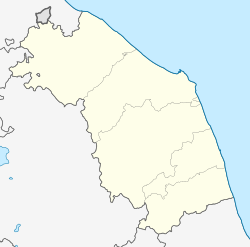Castel_Durante
Urbania
Comune in Marche, Italy
Urbania is a comune (municipality) in the Province of Pesaro e Urbino in the Italian region of Marche, located about 80 kilometres (50 mi) west of Ancona and about 40 kilometres (25 mi) southwest of Pesaro, next to the river Metauro.
This article needs additional citations for verification. (May 2018) |
Urbania borders the following municipalities: Acqualagna, Apecchio, Cagli, Fermignano, Peglio, Piobbico, Sant'Angelo in Vado, Urbino.
It is a famous ceramics and majolica production centre. In recent years, it has become more closely associated with the Befana folk tradition.




